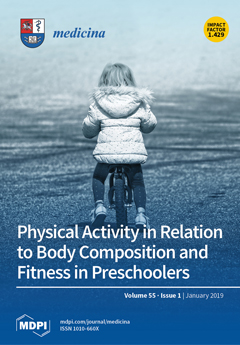Background and objective: Gout is a common form of inflammatory arthritis caused by the crystallization of uric acid. Previous studies have demonstrated that the genetic predisposition of gout varies in different ethnic populations. However the association study of genetic variants with gout remains unknown in the Vietnamese population. Our study aimed to assess the relationship between polymorphisms in
ABCG2 and
SLC22A12 and gout susceptibility in Vietnamese.
Materials and methods: Genomic DNA was extracted from blood of a total of 170 patients with gout and 351 healthy controls. We genotyped single nucleotide polymorphisms (SNPs): rs72552713, rs12505410 of the
ABCG2 gene and rs11231825, rs7932775 of the
SLC22A12 gene using polymerase chain reaction–restriction fragment length polymorphism (PCR–RFLP) and then confirmed 10% of randomly selected subjects by Sanger sequencing.
Results: Three SNPs (rs72552713 and rs12505410 and rs11231825) were in accordance with Hardy–Weinberg Equilibrium (HWE) (
p > 0.05) while rs7932775 was not (
p < 0.05). For rs72552713, CT genotype was significantly different between gout patient and control groups (
p < 0.001) and the T allele was associated with an increased risk of gout (OR = 21.19; 95% CI: 3.00–918.96;
p < 0.001). Serum uric acid and hyperuricemia differed significantly between CC and CT genotype groups (
p = 0.004 and 0.008, respectively). For rs11231825, a protective effect against gout risk was identified in the presence of the C allele when compared with the T allele (OR = 0.712; 95% CI: 0.526–0.964
p = 0.0302). In contrast, no significant difference of allele frequencies between gout patients and controls was detected for rs12505410 (
p > 0.05). However, significant differences in serum uric acid and systolic blood pressure were obtained among gout patients.
Conclusion: Our results suggest that
ABCG2 rs72552713 and
SLC22A12 rs11231825 are likely associated with gout in the Vietnamese population in which T allele may be a risk factor for gout susceptibility.
Full article






